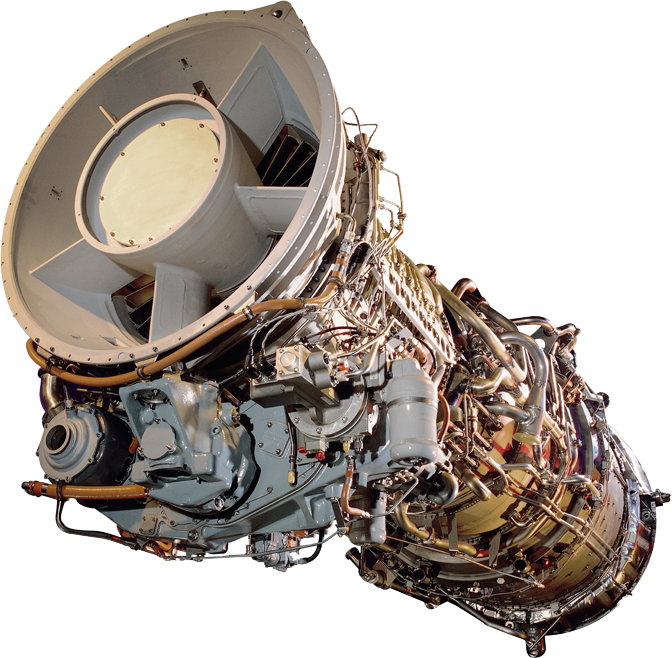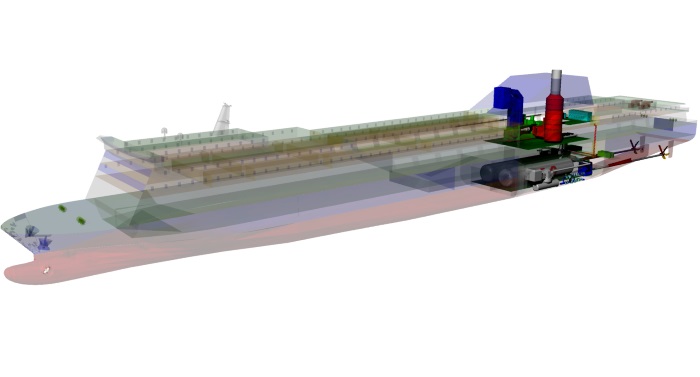World’s First LPG-Fueled Ferry Design Using GE Gas Turbine Completes HAZID Meetings
GE’s Marine Solutions reports that the world’s first Liquid Propane Gas (LPG)-fueled ferry design to use GE’s COmbined Gas turbine Electric and Steam (COGES) system has successfully completed Hazard Identification (HAZID) meetings. The consortium of Youngsung Global, DINTEC, Korea LPG Industry Association, GE’s Marine Solutions and Far East Ship Design & Engineering Co. (FESDEC) signed a multilateral memorandum of understanding in November 2016 to cooperate on this unique ferry design.
“Bureau Veritas, a world-leading classification society with a large and recognized expertise and experience in gas fueled ships, chaired the HAZID meetings. All consortium members were represented as well as SK Gas and E1 who are members of the Korea LPG Industry Association. These meetings took place over a three-day period in Busan and are a crucial tool used to identify hazards and safeguards at the early ship design stage,” said Brien Bolsinger, GE’s Vice President, Marine Operations, Cincinnati, Ohio. “Now with HAZID meetings successfully completed, the consortium will proceed with securing a shipbuilding contract and will seek Approval in Principle to further validate the safety of the ship design including the COGES propulsion system and the LPG fuel supply,” Bolsinger added.
Traditionally, a new ship design undergoes a series of processes from research and development to ship architecture and design, HAZID and AIP certification, and finally onto contracts with the shipyard and suppliers. Therefore, meeting HAZID requirements is considered a key milestone in ensuring the final success of the LPG COGES ferry design process.

Showcase Korean Technologies
This LPG-fueled ferry project provides an opportunity to showcase how Korean technologies advance the global marine industry. In addition, the project allows local Korean companies to participate in the full scope from designing the ferry to building major operational equipment, such as LPG tanks and fuel supply systems.
What follows are the roles each consortium participant plays in the COGES LPG ferry project:
· Youngsung Global: Ferry owner
· DINTEC: Ferry operator
· GE’s Marine Solutions: COGES propulsion system provider
· Answer: LPG fuel tank and gas supply system design
· FESDEC: LPG COGES ferry naval architect
· Korea LPG Industry Association: connects LPG providers with industries
· E1: LPG provider
· SK Gas : LPG provider
Increased use of LPG worldwide has made this exciting ferry project feasible. The ship is designed to ensure both economic benefits and environmental performances, adopting LPG as the main fuel for lower fuel costs and no emission of sulfur oxides (SOx). GE’s compact and lightweight COGES system will provide for all ship power, including propulsion.
An added benefit: the COGES system consumes almost no lube oil and meets current and future regulations for SOx, nitrogen oxides (NOx), carbon dioxide (CO2) and particulate matter. Specifically, GE marine gas turbines meet International Maritime Organization Tier III and United States Environmental Protection Agency Tier 4 standards now without exhaust after treatment and no methane slip.

Advantages of Gas Turbines
GE marine gas turbines are fuel flexible and can operate on a variety of fuels, including LPG, marine gas oil, biodiesel, bio-synthetic paraffinic kerosene blends and natural gas. The compact COGES arrangement — lighter and smaller than comparable diesel engines — allows for more revenue generating space on board ships and lower lifecycle costs. Maintenance of the COGES system requires only about 300 man-hours per year, and the entire turbine can be removed and replaced within 24 hours, reducing downtime for minimal interruption to ship operations.
GE marine gas turbines range from 4.5 MW to 52 MW output for ship power and propulsion. These engines operate worldwide for diverse commercial marine customers on cruise ships, fast ferries, high speed luxury yachts, floating production storage and offloading ships and offshore platforms. In addition, over 1,400 GE marine gas turbines power nearly 500 military ships for 35 navies globally, logging some 14 million operating hours.
Source: General Marine Solutions
HEADLINES
- Do shipping markets want Biden or Trump for the win?
- All 18 crew safe after fire on Japanese-owned tanker off Singapore
- Singapore launching $44m co-investment initiative for maritime tech start-ups
- Cosco debuts Global Shipping Industry Chain Cooperation Initiative
- US warns of more shipping sanctions
- China continues seaport consolidation as Dalian offer goes unconditional